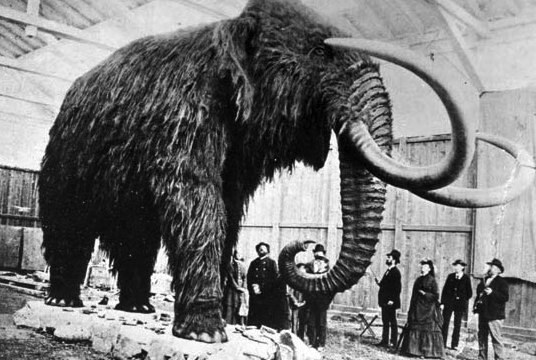Nature Communications -- "What Killed the Wooly Mammoth?"
Lady Jane, January 21 2013
The wooly mammoth species went extinct around 10,000 years ago. For many years scientists have advanced competing theories the cause, though a consensus seems to be emerging that a combination of global warming/habitat change and hunting by humans led to their demise. An extensive study led by Glen McDonald of UCLA has reached the following conclusions:
- Mammoths thrived throughout the Ice Ages from at least 30,000 years ago through 12,000 years ago (the last millennia of the Pleistocene Epoch). With 20 inch hair and lumbering size they were well adapted to that climate. They were particularly prominent in Siberia, Alaska, and Beringia (the land now covered by the Bering Strait).
- As the earth began to warm after the last glacial period (known as the Younger Dryas stadial), much of the Alaskan and Siberian landscape changed. Coniferous (pine) and betula (birch) trees flourished, and tundra changed to wetland in many cases. All of this impeded the travel of mammoths and made them more vulnerable.
- Humans became more numerous as well, particularly in this northern region. They hunted wooly mammoths for meat, fur, and tusks.
- No one factor was predominant in the mammoth's extinction. A combination of the factors above rapidly reduced their numbers. By around 8000 B.C. the last mammoths were gone (almost exactly marking the beginning of the current Holocene Epoch).
Samples from over 1,300 wooly mammoths were used to analyze climate and geography, providing a database of mammoth and tree presence within intervals of a few thousand years. The full study is contained in Nature Communications - MacDonald, G.M. et al. Pattern of extinction of the woolly mammoth in Beringia. Nat. Commun. 3:893 doi: 10.1038/ncomms1881 (2012).
